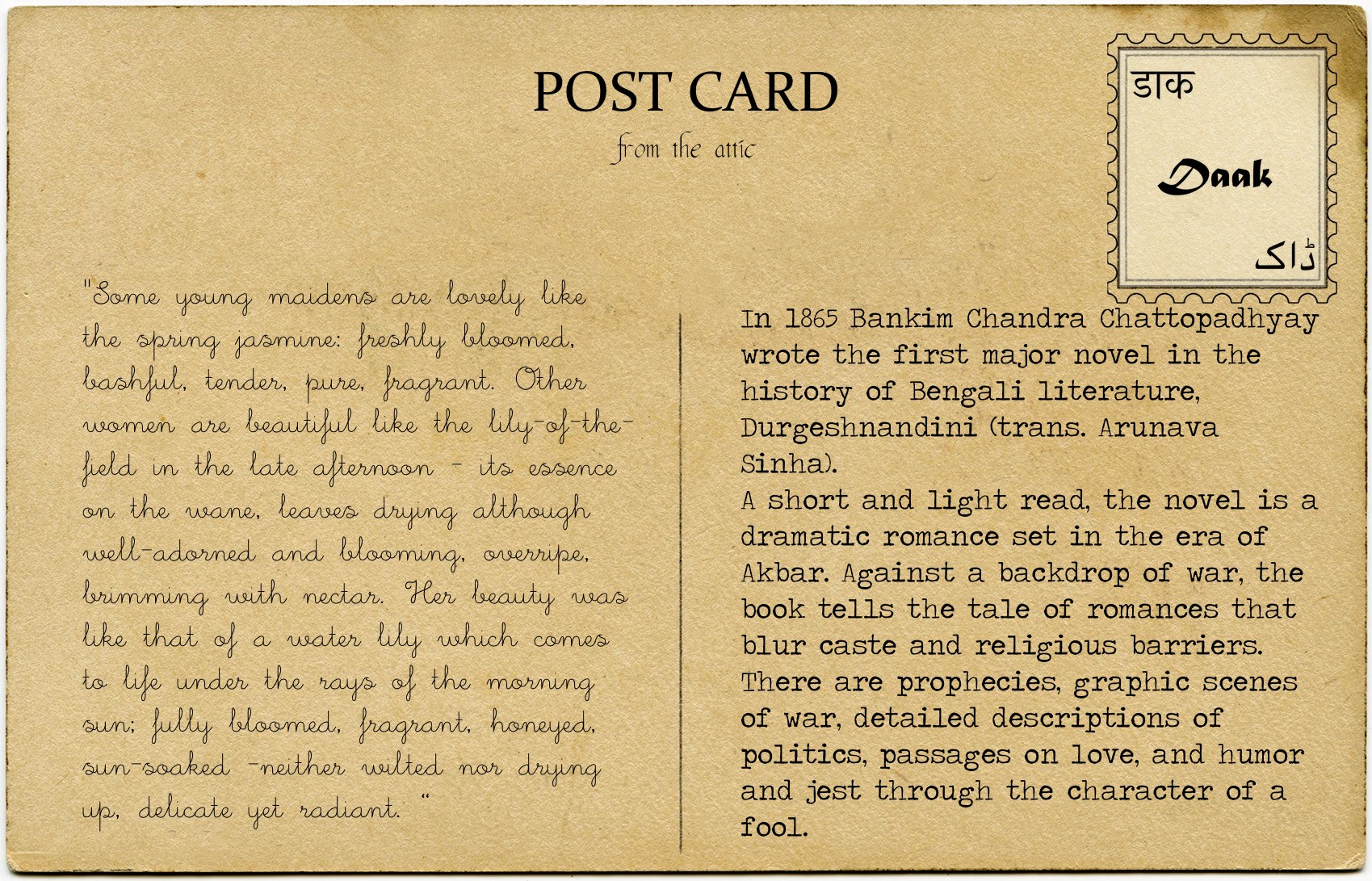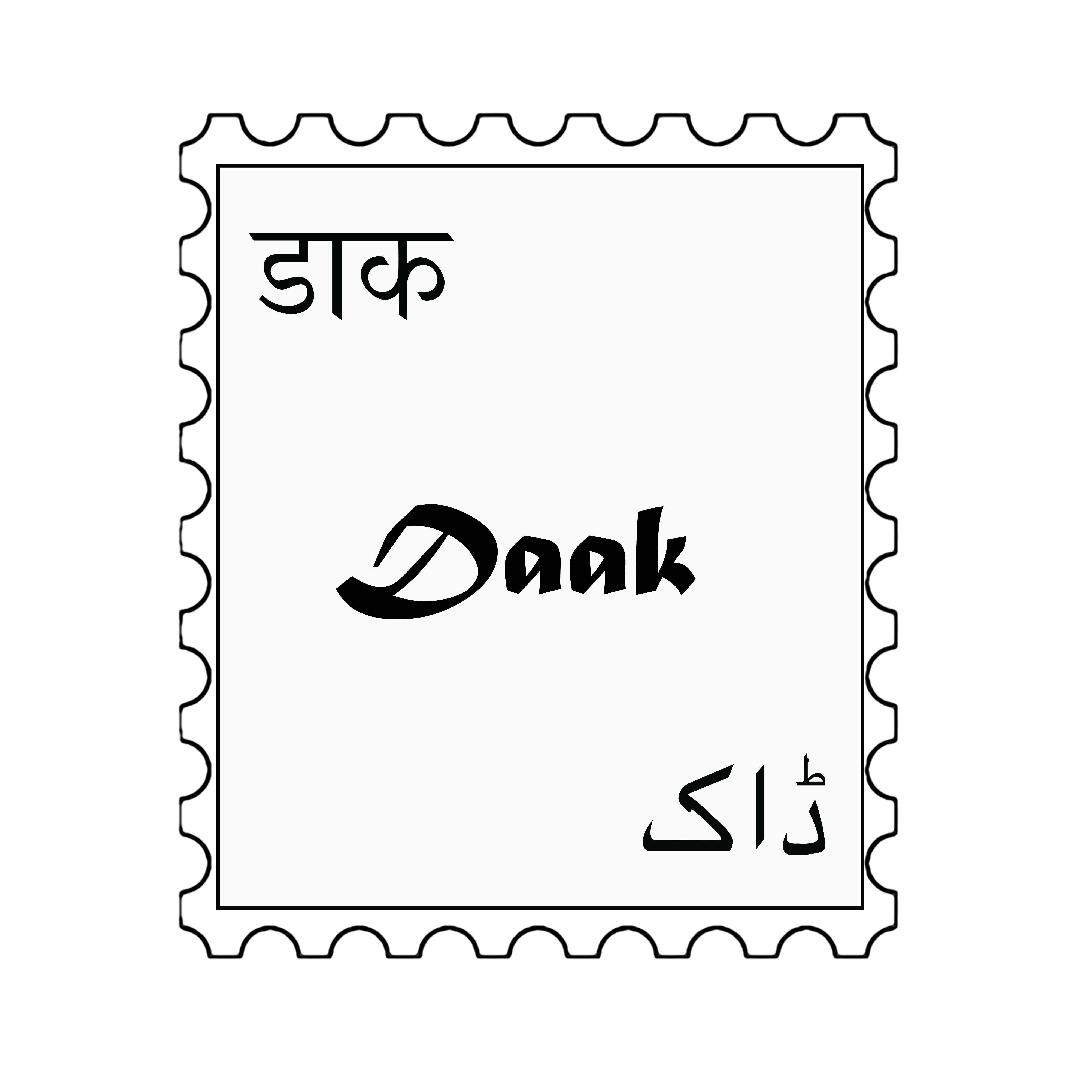
The Floral Beauty of Women: Bankim Chandra Chattopadhyay’s ‘Durgeshnandini’
In 1865 Bankim Chandra Chattopadhyay wrote the first major novel in the history of Bengali literature, ‘Durgeshnandini’ (Doorgeshnondini) . While most of us recognize Chattopadhyay as the composer of ‘Vande Mataram’, he is also widely regarded as a key figure of a literary renaissance in Bengal and arguably, the subcontinent. Arunava Sinha has masterfully translated what would have been a complex text, given the fact that it is historical fiction written in the 1800s and set in the 1500s.
A short and light read, the novel is a dramatic romance set in the era of Akbar. It is a love triangle between Jagat Singh, a Mughal General, Tilottama, the daughter of a Bengali feudal lord and sworn enemy to Jagat Singh’s father, and Ayesha, the daughter of a rebel Pathan leader against whom Jagat Singh was fighting. Against a backdrop of war, the book tells the tale of romances that blur caste and religious barriers. There are prophecies, graphic scenes of war, detailed descriptions of politics, passages on love, and ample of humor and jest through the character of a fool. As one reads this novel, one might be reminded of folktales of adventure, heroism and honor that abound across the subcontinent. Stylistically, the tone adopted by the writer speaks to the reader directly, as though narrating:
“Impatient readers may abandon this account but the author’s opinion is that impatience is not advisable.”
Chattopadhyay writes for a primarily male audience, as one realizes very early on in the book. The physical descriptions of women and men are very different throughout. Interestingly enough, and contrary to Chattopadhyay’s popular image today, the most beautiful passage is the one where he describes and contrasts the beauty of the three female lead characters in the book, generous with similes and creating a delightfully floral atmosphere:
“Ayesha was some twenty-two years of age. She was exquisitely beautiful, but hers was a beauty that is impossible to capture adequately in three or four adjectives. Tilottama was supremely beautiful too, but hers was not Ayesha’s kind of loveliness; the eternally young Bimala’s beauty used to captivate everyone – but Ayesha’s beauty was not like hers either. Some young maidens are lovely like the spring jasmine: freshly bloomed, bashful, tender, pure, fragrant. Tilottama was lovely in this manner. Other women are beautiful like the lily-of-the-field in the late afternoon – its essence on the wane, leaves drying although well-adorned and blooming, overripe, brimming with nectar. Bimala was such a beauty. Ayesha’s beauty was like that of a water lily which comes to life under the rays of the morning sun; fully bloomed, fragrant, honeyed, sun-soaked – neither wilted nor drying up, delicate yet radiant.”
You can read this epic romance and buy a copy of the book here. Make sure you don’t miss the gorgeous cover!

Leave a Reply